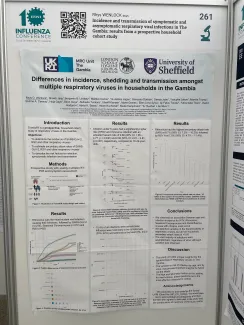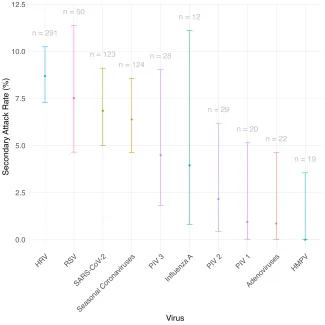Unveiling the true community burden of respiratory viruses
Unveiling the underlying burden of respiratory viruses in the community is challenging. Accurate diagnostic testing and case identification methods are the cornerstones of unbiased ascertainment. For effective control of respiratory infections, understanding the true community burden—including mild and asymptomatic cases—can inform assessments of virus transmission within the community.
Data on the burden of respiratory infections in community settings are scarce, particularly in resource-limited regions. Most studies include only symptomatic cases presenting to healthcare facilities. Rhys Wenlock from the London School of Hygiene and Tropical Medicine, United Kingdom, and his team conducted a household cohort study to evaluate the community burden of multiple respiratory viruses in The Gambia. Between March 2021 and June 2022, weekly upper respiratory tract swabs were collected from household participants. A multiplex RT-PCR assay was used to test for 12 respiratory viruses.
From over 14,500 swabs, the team identified 1,423 distinct viral episodes. The most common were human rhinovirus/enterovirus (HRV), followed by SARS-CoV-2, seasonal coronaviruses, parainfluenza types 1–4, RSV-A, and influenza A. A striking 88% of these episodes were asymptomatic. When symptoms did occur, they were most common with influenza A (25% symptomatic), RSV (18%), and SARS-CoV-2 (16%). The secondary attack rate (SAR)—the probability that an infection occurs among susceptible household contacts—was highest for HRV (8.7%), followed by SARS-CoV-2 (7.6%) and RSV (7.5%).
This study underscores that in resource-limited settings such as The Gambia, the true burden of respiratory viruses is substantial, much of which remains hidden due to asymptomatic infections. These silent cases play a significant role in household and community transmission, complicating efforts to control outbreaks based solely on symptomatic case detection.
The findings highlight the importance of comprehensive surveillance that captures asymptomatic infections. Recognising the high asymptomatic burden and understanding transmission dynamics are crucial steps towards developing effective interventions to reduce transmission in similar community settings worldwide.
Learn more about this content via the virtual platform:




